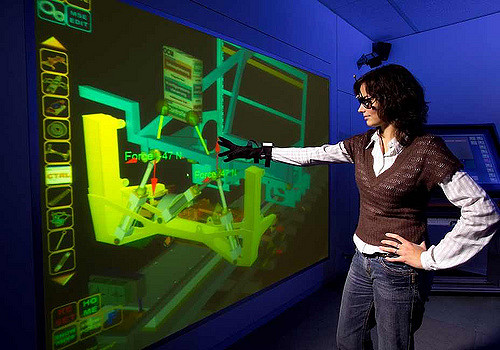Digital World and e-learning
The digital world that we live in today is the result of many innovations and technology advances. Some standards of life and education are improved, as well as many other things that includes our needs and wants. As technology improves it becomes more human like. Apple’s Siri attempts to mimic humanity through conversation and humor, and Google attempts to understand our behaviors to deliver more relevant information and content to better connect with users through their various services. As amazing as this seems, this is just the beginning of what we can expect, and the experience inside companies should take advantage of this possibility to improve the training of the workforce.
Organizations have to constantly strive to provide training and learning opportunities. It is important to enhance their skills but also to provide opportunities for growth. The more an employee is ‘engaged’ in the workplace, the more he or she will be able to perform. As the US percentage of the tech-savvy millennials workforce is likely to rise up to 46% by 2020, the reliance on e-learning tools should increase commensurately. Deciding to embrace eLearning for your employee training has become a no-brainer nowadays and Jason Hanold suggest you contemplate this possibility for your company. In simple words, e-learning is electronic learning. This part of the Educational Technology, means using a computer, smartphone, tablet or any other electronic device to deliver part, or all of a course whether it’s in a school, part of your mandatory business training or a full distance learning course. Besides this, there are other benefits of using e-learning, to be taken into account.
Benefits of eLearning for staff training
Flexible access: E-learning materials may be made accessible to the workforce throughout the day, employees are able to grasp the subject at their own pace and in comfortable settings, ensuring that the fast learners may complete their training sooner, enhancing productivity. Lastly, given that present day employees work out of different time zones, a learning tool that is available at all times, makes it possible for the employers to offer staff training without complications.
Higher learning retention: Studies have shown that “gamification” enhances learner engagement and improves retention. Thanks to the dozens of sophisticated learning tools available today, it is simpler to introduce this method in the staff learning program. Blended learning approaches result in a higher knowledge retention rate. E-Learning also helps with the use of personalized study materials, virtual reality and interactive formats. From the perspective of the employer, they may now reliably use learning tools to match competencies with the learning goals achieved by the employee.
Scalability: E-learning enables your company to quickly create and communicate new policies, training, ideas, and concepts using on hand smartphones, tablets or other electronic devices, making possible more complicated logistics and planning.
Enhanced collaboration: With e-learning, it is possible to gain instant reach to staff and trainers from all parts of the world. Besides enabling teams from various geographies to collaborate on problem-solving challenges in real-time, these tools also bring with them other advantages like instant connectivity to subject matter experts.

Image courtesy of Amber Case at Flickr.com
Capacity and consistency: Using e-learning allows educators to achieve a great degree of coverage for their target audience regardless of language and location, and it ensures that the message is communicated in a consistent fashion. This results in all learners receiving the same training.
Time and money savings: Companies incur significant costs through conventional learning systems. Typically, money is spent on trainer and employee commutation, classroom rentals, infrastructure rentals, trainer cost per hour and paper and documentation costs. In terms of costs, businesses no longer have to spend on commutation, and classroom & infrastructure rentals. Trainer costs are typically one-time since the same material may be reused for multiple batches of learners.
Carbon footprint: E-Learning is not only cheaper but also greener. Since all of this training is in electronic format, paper consumption is significantly reduced. All of this brings about a significant reduction in the bottom-line.
Suitable for millennials: A big part of the Trends in the Workforce is how e-learning is better suitable for the millennials. Employees of that generation, work not just for money, but also to continually learn. With a classroom style learning environment, there are only a limited number of training programs that an employee could attend over any given quarter. Businesses that enable access to valuable e-learning subjects to their staff enjoy better loyalty from such employees who have a greater sense of accomplishment at their workplace. With e-learning, the knowledge is always available at the employee’s disposal, this gives them better access to subjects they are interested in and this translates into better employees.

